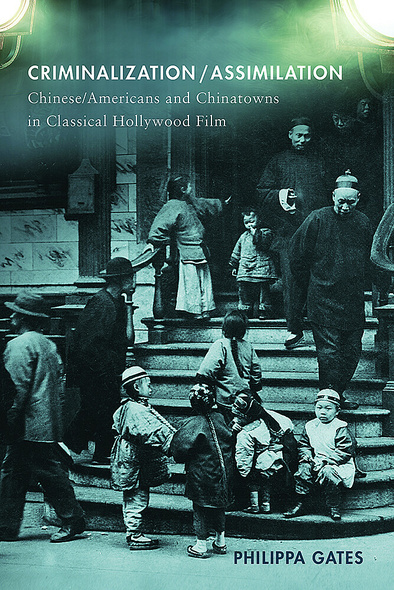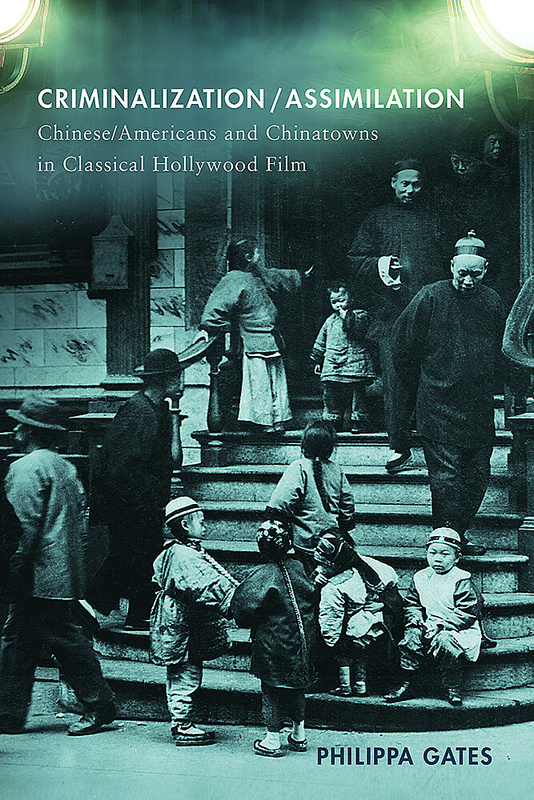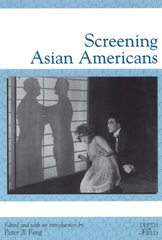
280 pages, 6 x 9
15 images
Paperback
Release Date:08 Mar 2019
ISBN:9780813589411
Hardcover
Release Date:08 Mar 2019
ISBN:9780813589428
Criminalization/Assimilation
Chinese/Americans and Chinatowns in Classical Hollywood Film
Rutgers University Press
Criminalization/Assimilation traces how Classical Hollywood films constructed America’s image of Chinese Americans from their criminalization as unwanted immigrants to their eventual acceptance when assimilated citizens, exploiting both America’s yellow peril fears about Chinese immigration and its fascination with Chinatowns. Philippa Gates examines Hollywood’s responses to social issues in Chinatown communities, primarily immigration, racism, drug trafficking, and prostitution, as well as the impact of industry factors including the Production Code and star system on the treatment of those subjects. Looking at over 200 films, Gates reveals the variety of racial representations within American film in the first half of the twentieth century and brings to light not only lost and forgotten films but also the contributions of Asian American actors whose presence onscreen offered important alternatives to Hollywood’s yellowface fabrications of Chinese identity and a resistance to Hollywood’s Orientalist narratives.
Philippa Gates takes us on an engrossing journey through the Chinatown streets of Hollywood’s imagination in her comprehensive study of the ambivalent depiction of Chinese people and places on American screens. Her superlative book provides essential reading for scholars, students, and concerned readers who need to understand this history fully to critique the images and ideas that continue to shape today’s cultural landscape.
Meticulously researched and laudably comprehensive, Criminalization/Assimilation explores Chinatown’s place in the lexicon of early Hollywood films. This is a unique and important contribution to film studies and Asian American studies—a highly satisfying read!
A most informative analysis…. The main strength of Criminalization/Assimilation may be its detailed outline of the various shifts in representations that occurred over a fifty-year period, that certainly complexifies a strictly axiological appreciation of Chinatown films as either racist or non-racist.’
PHILIPPA GATES is a professor of film studies at Wilfrid Laurier University in Ontario, Canada. She is the author of several books, including Transnational Asian Identities in Pan-Pacific Cinemas.
Contents
Part I: Hollywood’s Chinese America
1 Introduction
2 Yellow Peril, Protest, and an Orientalist Gaze: Hollywood’s Constructions of Chinese/Americans
Part II: Chinatown Crime
3 Imperilled Imperialism: Tong Wars, Slave Girls, and Opium Dens
4 The Whitening of Chinatown: Action Cops and Upstanding Criminals
Part III: Chinatown Melodrama
5 The Perils of Proximity: White Downfall in the Chinatown Melodrama
6 Tainted Blood: White Fears of Yellow Miscegenation
Part IV: Chinese American Assimilation
7 Assimilation and Tourism: Chinese American Citizens and Chinatown Rebranded
8 Assimilating Heroism: The Chinese American as American Action Hero
9 Epilogue
Filmography
Acknowledgments
Notes
Index
Part I: Hollywood’s Chinese America
1 Introduction
2 Yellow Peril, Protest, and an Orientalist Gaze: Hollywood’s Constructions of Chinese/Americans
Part II: Chinatown Crime
3 Imperilled Imperialism: Tong Wars, Slave Girls, and Opium Dens
4 The Whitening of Chinatown: Action Cops and Upstanding Criminals
Part III: Chinatown Melodrama
5 The Perils of Proximity: White Downfall in the Chinatown Melodrama
6 Tainted Blood: White Fears of Yellow Miscegenation
Part IV: Chinese American Assimilation
7 Assimilation and Tourism: Chinese American Citizens and Chinatown Rebranded
8 Assimilating Heroism: The Chinese American as American Action Hero
9 Epilogue
Filmography
Acknowledgments
Notes
Index








